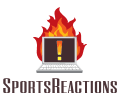 |
| http://www.zimbio.com |
The above link takes you to the most recent version of the Hollinger Power Ranking of NBA teams on ESPN.com.
SportsReaction
I love John Hollinger’s Power Rankings on ESPN.com. I use them to inform me which teams are good, and which ones aren’t. Suffice to say, I was very disappointed to see my beloved Boston Celtics at #7 this morning. They did just get embarrassed in Phoenix by a Suns team currently ranks 21st in the same rankings; but I’m not going to use this space to defend them or debate the Hollinger rankings. I want to use this space to discuss a team that I think gets the least amount of press for being one of the league’s best teams; the New Orleans Hornets.
Everybody always talks about the Los Angeles Lakers, and the aforementioned Boston Celtics. The Orlando Magic are constantly being discussed since their big trade, and Derrick Rose is in everybody’s MVP discussions nowadays as he has led the Chicago Bulls to a 33-14 record. Even I have spoken at length about the San Antonio Spurs.
But nobody talks about the #4 team in the Hollinger rankings…the New Orleans Hornets. They have played the third toughest schedule in the league (.526 winning percentage of combined opponents), have played an equal amount of games on the road and at home and boast the best point guard in the league in Chris Paul. Actually, if it weren’t for LeBron James, we’d be talking about the best player in the league as he ranks second only to "The King" in PER (Player Effienciecy Rating).
When it comes to ranking point guards the most important thing to look at is assist to turnover ratio, and guess who leads the entire league in this category? Yep, with a ratio of 4.19 Paul dominates the competition. For reference, another point guard that is widely considered to be a great “caretaker” of the basketball, Rajon Rondo, has a ratio of 3.12. Paul outshines him by more than one full point!
So now that my love for Chris Paul has been stated, let’s have a look at New Orleans league ranks in the offensive and defensive “four factors.” These are four key offensive and defensive team stats identified by Basketball-reference.com that do a great job of summarizing how good or bad a team is on both sides of the ball.
***Definitions for stats that aren't clearly defined by their title below:
Effective FG%: the formula is (FG + 0.5 * 3P) / FGA. This statistic adjusts for the fact that a 3-point field goal is worth one more point than a 2-point field goal.
Offensive Rebound %: the formula is 100 * (ORB * (Tm MP / 5)) / (MP * (Tm ORB + Opp DRB)). Offensive rebound percentage is an estimate of the percentage of available offensive rebounds a player grabbed while he was on the floor.
Defensive Rebound %: the formula is 100 * (DRB * (Tm MP / 5)) / (MP * (Tm DRB + Opp ORB)). Defensive rebound percentage is an estimate of the percentage of available defensive rebounds a player grabbed while he was on the floor***
Here is New Orleans ranks in each of the four factors on both sides of the ball:
***Definitions for stats that aren't clearly defined by their title below:
Effective FG%: the formula is (FG + 0.5 * 3P) / FGA. This statistic adjusts for the fact that a 3-point field goal is worth one more point than a 2-point field goal.
Offensive Rebound %: the formula is 100 * (ORB * (Tm MP / 5)) / (MP * (Tm ORB + Opp DRB)). Offensive rebound percentage is an estimate of the percentage of available offensive rebounds a player grabbed while he was on the floor.
Defensive Rebound %: the formula is 100 * (DRB * (Tm MP / 5)) / (MP * (Tm DRB + Opp ORB)). Defensive rebound percentage is an estimate of the percentage of available defensive rebounds a player grabbed while he was on the floor***
Here is New Orleans ranks in each of the four factors on both sides of the ball:
Offensive "Four Factors" | Stat | NBA Rank |
Effective FG% | 0.492 | 17th |
Turnovers per 100 Poss. | 0.135 | 17th |
Offensive Rebound% | 0.251 | 19th |
Free throws per FG Attempt | 0.237 | 9th |
Defensive "Four Factors" | Stat | NBA Rank |
Opponent Effective FG% | 0.481 | 7th |
Opp. Turnovers per 100 Poss. | 0.141 | 9th |
Defensive Rebound per 100 Poss. | 0.770 | 2nd |
Opponent Free throws per FG Attempt | 0.211 | 5th |
Even though they have one of the most efficient players in the game handling the ball, the Hornets are clearly only an average offensive team, but are a very good defensive team. But, they have succeeded against a very tough schedule so far and their #4 ranking in the Hollinger rankings is correct.
I’m not saying the Hornets should be a favorite to win the NBA Championship this season, or even be ranked number one in anybody’s power rankings, but don’t forget them. Just because they don’t get the “press” that the Lakers and Celtics get doesn’t mean they’re not as good.
I hope this article has done a good job showing how good the New Orleans Hornets are, and given them some of the "pub" they've been lacking.
I’m not saying the Hornets should be a favorite to win the NBA Championship this season, or even be ranked number one in anybody’s power rankings, but don’t forget them. Just because they don’t get the “press” that the Lakers and Celtics get doesn’t mean they’re not as good.
I hope this article has done a good job showing how good the New Orleans Hornets are, and given them some of the "pub" they've been lacking.

